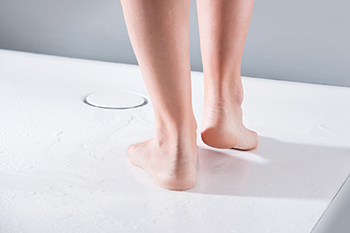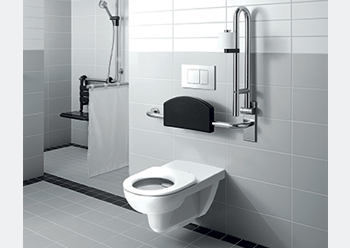Geberit highlights need for careful planning
01 December 2019
What is in vogue now may not be fashionable 25 years down the line, which is the average lifespan of a bathroom, says Geberit, a European leader in the field of sanitary solutions. However, with careful planning, particularly with a view to safety and accessibility, bathrooms can be created to be timeless and provide long-lasting comfort well into the future.
On the top of the company’s checklist of some of the priorities to be considered when designing a bathroom is the need to plan for a barrier-free bathroom and senior-friendly construction.
“Everyone benefits from senior-friendly construction, including children and those with disabilities,” Gabriel Nassar, managing director of Geberit’s Representative office Gulf, tells Gulf Construction. “Thus, it makes sense to take this aspect into account and address it actively when discussing and planning the bathroom. The investments made in a new bathroom then really pay off in the long term and contribute to value conservation.”
 |
|
Geberit’s Setaplano shower surface has antislip properties. |
A barrier-free bathroom would require ease and safe access to the shower and wall-hung furniture and water closets (WCs).
“Floor-even showers are discreet and enable a comprehensive structuring of the room as well as entry into the shower area without a threshold. They make the bathroom appear larger – not to mention safer. They are ideal for both the young and the old as barrier-free access to the shower can prevent stubbed toes and the like,” says Nassar.
Turning to wall-hung bathroom furniture and fixtures, he says: “If bathroom furniture and toilets are hung on the wall, the floor underneath can be cleaned easily. Moreover, the seat height on a wall-hung WC can also be customised during installation. On some models, the height can even be adjusted afterwards. This is ideal if there is a need sometime in the future to raise the seat to make standing up easier.”
For the washbasin, a trap that is placed underneath the basin gets in the way when a person sitting on a stool or in a wheelchair uses it. Concealed traps eliminate this problem and provide extra space underneath the washbasin, he says.
Another key aspect is making sure everything measures up to any future requirements.
He elaborates: “Whether carrying a small child or sitting in a wheelchair, doors and entrances have to be sufficiently wide. Also, when planning bathroom furniture, it is important to make sure that things used every day can be reached easily.”
With the increasing need to use power points in the bathroom, careful consideration also must be given to the positioning of these points, he says. “Having a mains connection in the right place means that an odour extraction unit or shower toilet can be installed at a later date. Shower toilets offer more than just luxury; in addition to added comfort, they also bring health benefits,” Nassar says.
Finally, to make provision for support handles in the future, installation elements should be fixed behind the tiles as they provide enormous load-bearing capacity. Ideally, stable mounting plates should be installed at the outset in critical areas – such as next to the toilet or in the shower. “This doesn’t cost the Earth and it means support handles can be attached without structural alterations, when needed,” he says, pointing out however that the planning documents must be kept in a safe place so that the homeowner knows what’s installed behind the wall at a later date.
The globally-operating Geberit Group is headquartered in Rapperswil-Jona, Switzerland. It operates with a strong local presence in most European countries, providing unique added value when it comes to sanitary technology and bathroom ceramics. The group’s production network encompasses 29 facilities, of which six are located overseas. With around 12,000 employees in around 50 countries, Geberit generated sales of CHF 3.1 billion ($3.13 billion) in 2018.
- Ideal Standard aims to shape the future
- Geberit highlights need for careful planning
- Icon 3D wins Best Product Design award
- Ritmonio aims to meet contemporary needs



